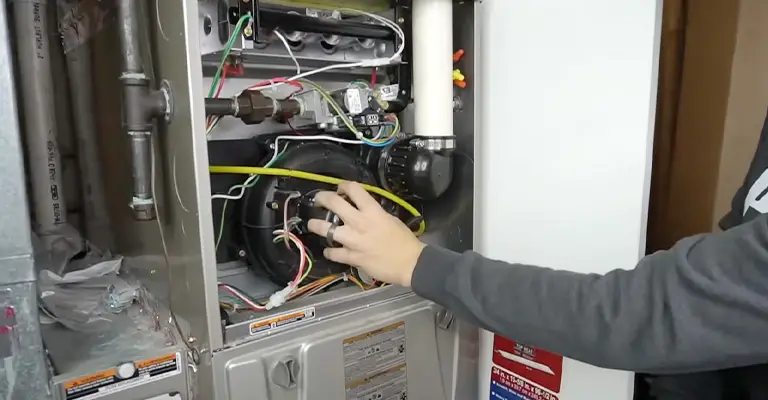The blower motor in your furnace plays a crucial role in circulating heated air throughout your home, ensuring consistent warmth during the colder months.
However, if you’ve encountered a situation where the furnace blower motor emits a humming sound but fails to start, it can leave you in a chilly predicament.
This issue indicates a problem within the motor or its components that require attention and troubleshooting.
Understanding the potential causes behind a furnace blower motor that hums but won’t start and the appropriate steps to address the issue can help you restore functionality to your heating system efficiently.
In this guide, we will explore common reasons why the blower motor may exhibit this behavior and provide you with practical solutions to get your furnace up and running, ensuring optimal heating performance in your home.
So, What’s The Problem?
How is your furnace blower working if nothing is blowing through the grates? You don’t hear the fan rotating – just the light buzz?
A soft hum is usually always heard when a furnace is running. On the other hand, there is a louder hum that could also be described as buzzing.
The problem is very common with furnaces. There is a chance that your furnace is malfunctioning because of the capacitor, a small and relatively inexpensive electrical part.
There is a possibility that the blower motor might be damaged, which is a moderate-to-expensive repair, but let’s hope for the best here. This is usually due to the capacitor.
You can choose from two types of capacitors: start capacitors and run capacitors. The majority of furnaces sold today only come with one capacitor, known as the run capacitor.
A dual-run capacitor is used in AC condensing units and packaged heat units to run two fans simultaneously, such as a blower fan and an AC fan.
Replacing a capacitor is easy whether you do it yourself (cheap) or with a professional (moderately expensive).
Why Is My Furnace Humming But Not Kicking On?
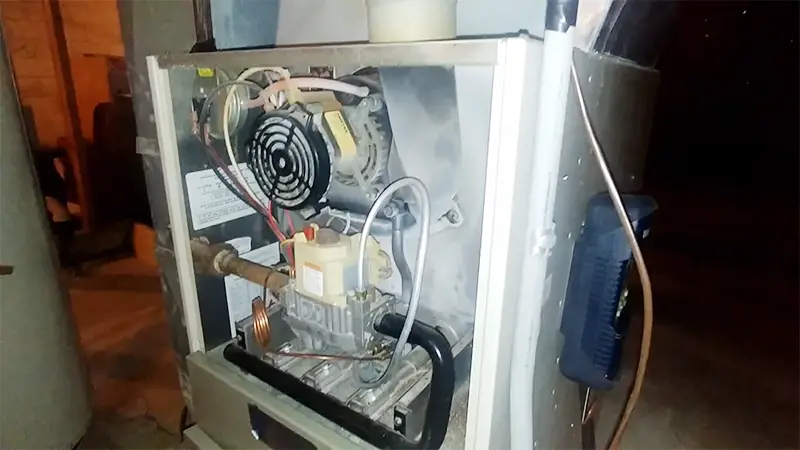
A damaged capacitor may cause the hum when the motor is on but not turning, thus needing to be replaced if this occurs. The cause could be a malfunctioning capacitor or blocked filters.
In most cases, humming when the blower is turned off indicates that the pilot light needs to be adjusted. There is no universal meaning to “hum.”. Your blower motor’s specific issue can be revealed in these ways.
Humming When On
When the blower is on, a humming may be caused by dirty gas burners that must be cleaned, adjusted, or replaced. Regular furnace filter changes and annual furnace maintenance are the best ways to avoid all of these problems.
Humming At Slow Speeds
The furnace runs at a slower speed once the home has reached the set temperature, saving energy.
An audible hum could indicate the motor is working harder than it should for regular operation if a hum accompanies the slowdown. If that is the case, there will need to be replacements for the motor and capacitor.
Maintenance and regular air filter replacement are the best ways to prevent dust and debris from getting into the system.
How To Check The Capacitor On Your Blower Motor
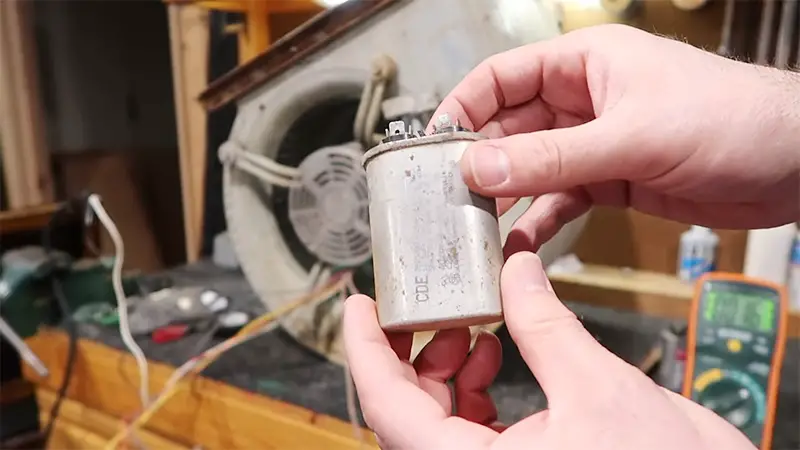
To fix this issue, you need to remove the outer panel from your furnace to see what’s underneath. Upon installation, you will see a capacitor attached to the outside of the drum with an internal fan.
To protect yourself, use a dowel or similar tool while the furnace is off and the thermostat is set to low to turn the fan yourself. The capacitor may be to blame if the fan spins easily.
If Your Capacitor Needs To Be Replaced
Changing the capacitor isn’t terribly inexpensive, but it should be done anyway. This information is important to remember when replacing a capacitor:
Carefully remove the capacitor: Ensure the furnace is not running when pulling the capacitor out. Use an insulated screwdriver to avoid any electrical current accidents when removing the wires from their terminals.
Use furnace capacitors: Make sure the capacitor replacement is compatible with the furnace and meets the energy requirements of the previous capacitor. You should also check their values to check if the microfarad and voltage ratings match.
Know where to buy new capacitors: Appliance stores and online sites sell capacitors. In addition to finding a capacitor online, you can call an HVAC parts distributor to find one that meets your specifications.
Consider professional help: Although replacing a capacitor can be pretty straightforward, calling a furnace company may be a better choice. They will likely know how to deal with the typical problems associated with humming quickly.
While the part itself is inexpensive, the installation will raise costs significantly, making it important to consider that when hiring technicians.
Other Reasons Why A Furnace Might Make A Humming Noise
It is normal to hear noise from your furnace while operating. An excessive humming or buzzing noise, however, is cause for concern. If there is a loud hum, it could indicate a basic maintenance issue or an issue which may be more serious.
Failed Capacitor
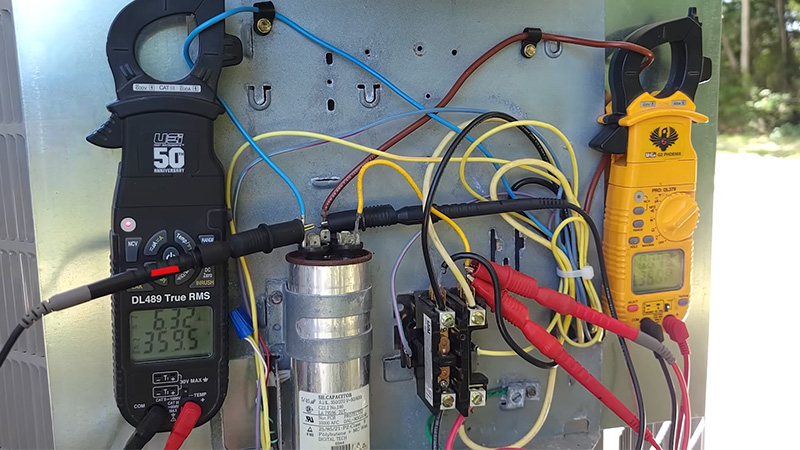
It is possible to find two types of capacitors in furnaces. This capacitor assists the heater’s motor in starting up when it is first turned on. For the fans to move the hot air throughout the house, run capacitors supply electricity to the fan motors.
The capacitor may be damaged and needs to be replaced or repaired if the unit is making noise and the motor isn’t turning.
Loose Ductwork
It is possible for the joints and seams in your home’s ductwork to wear over time and become loose over time, causing it to vibrate and hum. Air leaks can also indicate your HVAC system is not operating as efficiently as it should be due to leaks.
Loose Equipment
Typically, loose equipment creates noise because it has deteriorated or is not maintained correctly. With time, belts, nuts, and bolts may lose their tightness. This can lead to serious equipment failures if left unaddressed.
Blower Motor
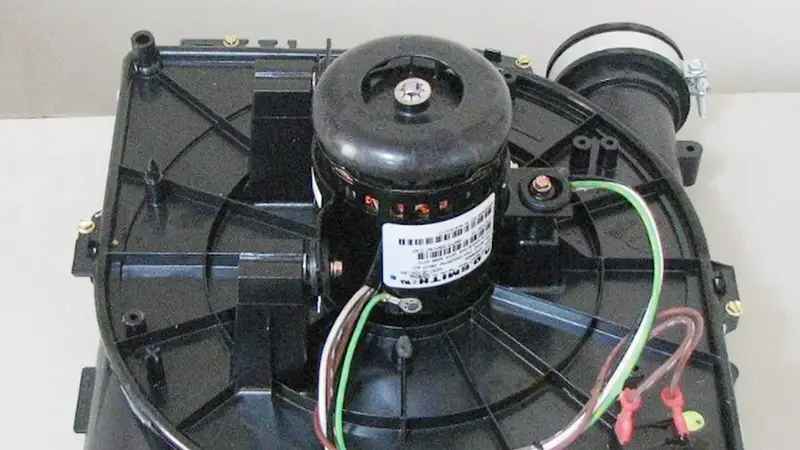
Blower motors are key components in heating and air conditioning systems, responsible for directing heat from the furnace. Humming and buzzing noises are also common due to this source.
It is common for blower motors to produce noise when not adequately lubricated. It is also possible that the hum is caused by dirt and debris getting inside the unit.
Transformer
Although a failing transformer is the least likely cause of humming in an HVAC system, a power surge can cause it to hum. If this is the case, it is essential to replace the transformer before the furnace stops completely.
Maintenance And Prevention Tips
Taking the following steps to maintain your furnace blower motor and unit will keep them in good working order:
Test run capacitor proficiency: After removing it, confirm the capacitor’s status using a multimeter.
If you do this, you will know it still has some juice left. It can also be done to diagnose electrical problems with a motor if a problem with the capacitor is suspected.
Clean the blower: You can use a damp cloth to wipe the blower and surrounding belts to remove dust and debris.
Ensure the blades of the fan are included as well. An effective way to prevent unnecessary furnace and blower motor problems is to clean them regularly.
Replace air filters: Regularly replacing air filters is important for general maintenance. If the motor is not lubricated, it may burn out.
Replacement intervals will vary depending on how often you use the furnace. If it is getting full, you should replace it once it is cleared of debris.
Run furnace in the off-season: Run your furnace at least once in the off-season to be sure it’s working and keep it maintained. In the winter, you may need your car when it is stored in a garage all year, so you may want to keep it alive by giving it some use.
Final Words
If you check your furnace regularly during the colder months, you can address humming noises quickly, avert further repairs, and get enough heat into your home.
Check for debris buildup for a fully working furnace, and consider changing your capacitor if you hear humming without a starting motor.

